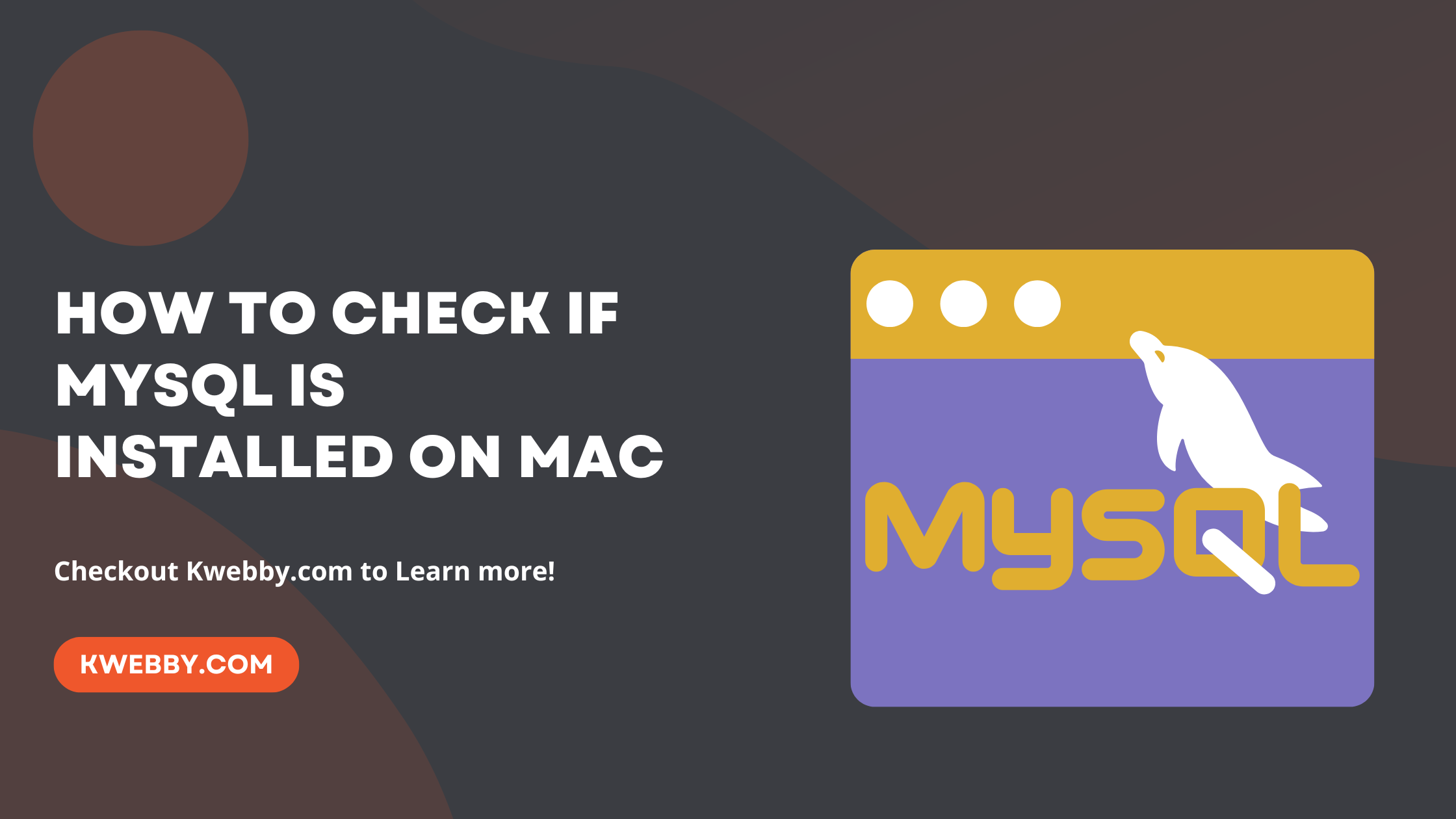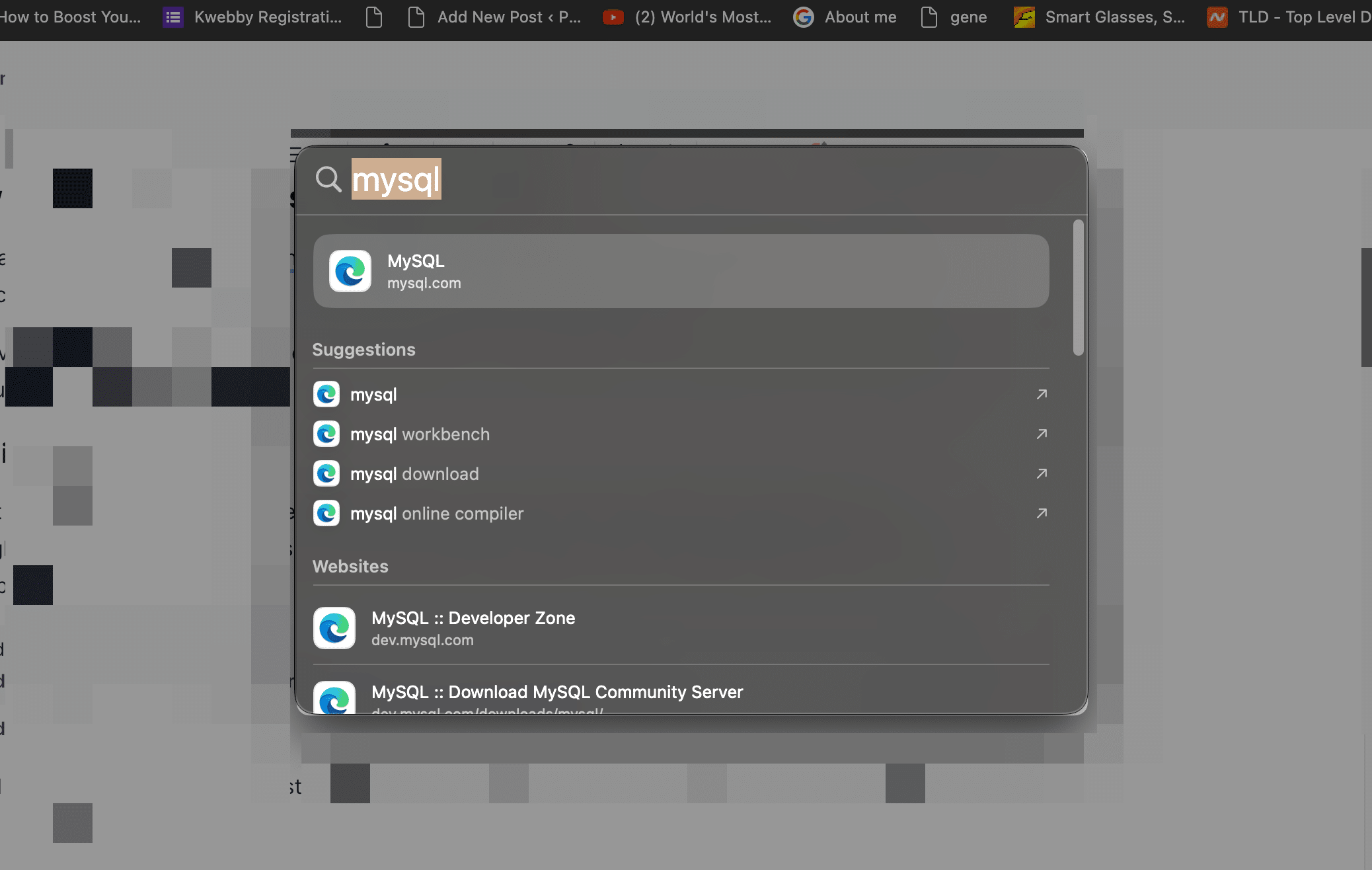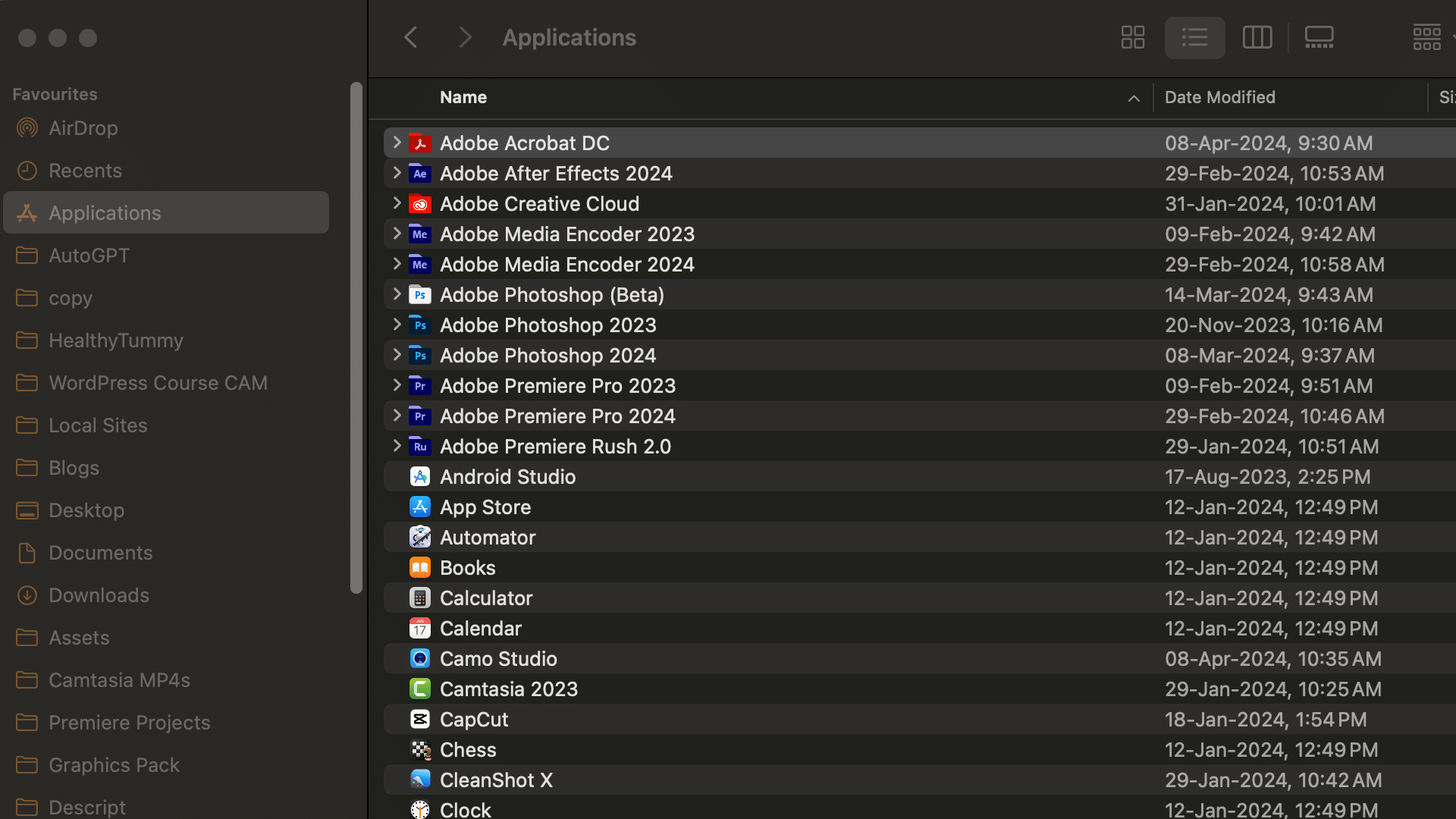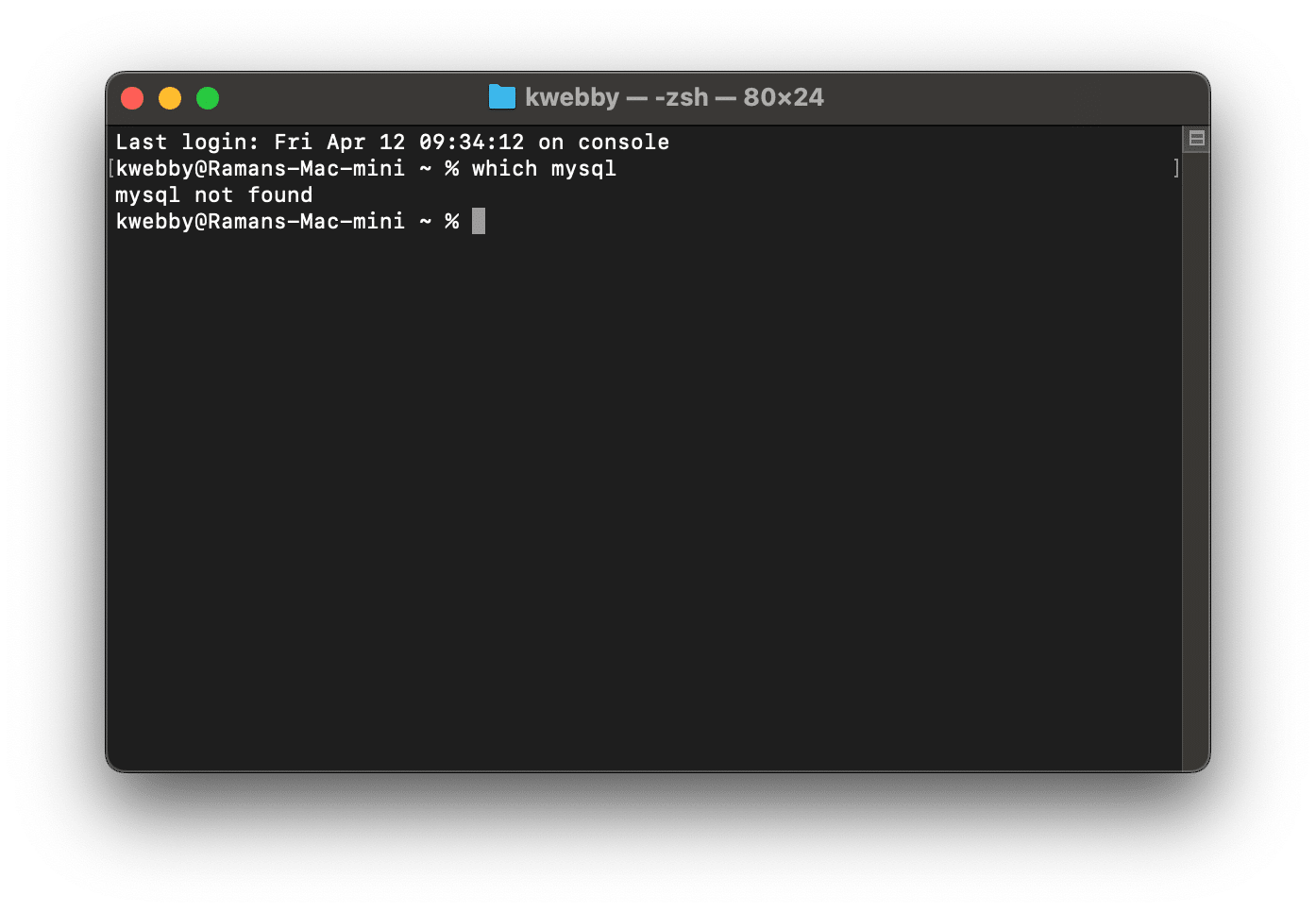
How to check if MySQL is installed on Mac (4 Easy Methods)
Choose Your Language:
Are you curious to know whether your Mac serves as the home for MySQL, the world’s most favored open-source relational database? Whether you’re knee-deep in development work or just beginning to dip your toes into the world of databases, the ability to confirm the MySQL installation on your Mac is vital.
This informative piece is crafted to guide you through several methods to check if MySQL is installed on your Mac.
From using the terminal commands to advanced ones, we’ll ensure you’re equipped with the knowledge to verify your MySQL server presence, understand your installed MySQL version, and make the most out of your MySQL databases.
How to Fix CoreServicesUIAgent Won’t Close on Mac (8 Methods)
1 How to check if MySQL is installed on mac
There are a number of ways you can check if mysql has been installed on mac. Before you start using technical ways to check for MySQL, you should perform some basic tests.
If you’ve recently purchased a Mac or are working on a shared system, these basic actions will quickly tell you whether MySQL is installed.
1.1 Spotlight Search

A swift and efficient route to uncover if MySQL graces your Mac is harnessing the power of the Spotlight Search. Initiating this is as simple as hitting Command (⌘) + Spacebar and entering “MySQL” in the prompt.
Should MySQL dwell within your system, its presence will be unmistakably highlighted in the displayed search outcomes.
This technique not only signals the presence of MySQL but also potentially surfaces related components such as MySQL Workbench—this software serves as an integrated environment for MySQL databases, offering a user-friendly graphical interface for database management.
Employing Spotlight Search stands out as a remarkably direct method for confirming MySQL installation on your Mac, effortlessly bringing to light whether MySQL server, client, or any related database tools are at your disposal.
1.2 Applications Folder

Diving deeper into the intuitive methodologies for checking MySQL’s installation on your Mac, directly navigating to the Applications Folder presents a nearly effortless strategy.
Simply open this folder and scout for MySQL or any associated applications, such as MySQL Workbench. Discover and open MySQL Workbench tucked away among your applications to confirm the installation of MySQL on your Mac.
This method stands out for its simplicity and effectiveness, offering a clear signal that MySQL and its suite of utilities are ready for your database management needs.
1.3 Terminal Commands to Check MySQL Installation
If the initial checks do not produce conclusive results, it is time to resort to the Terminal. The Terminal in macOS is a powerful tool for interacting with your system via command-line interfaces (CLI). Here’s how you can use it to detect MySQL.
1.3.1 Using the ‘which’ Command
The utility of the `which` command within the Terminal serves as a straightforward mechanism to decipher the status of MySQL’s installation. Essentially, by entering `which mysql` into the Terminal, you engage a command designed to trace the MySQL binary’s pathway, assuming its presence on your device.

A successful query from the command shows the path leading to the MySQL binary, signifying not only that MySQL has been installed but providing a tangible link to its operational locus.
Contrastingly, if the search results in no output from this command generally signals that MySQL has not found its way onto your Mac, thereby necessitating a follow-through with installation procedures.
1.3.2 Checking the MySQL Version
After confirming that MySQL is installed on your Mac, the next crucial step is to determine the version of MySQL you’re working with. To accomplish this, simply open the Terminal and type in the command `mysql –version`.
Upon execution, this command will swiftly display the version number of the installed MySQL, a piece of information vital for ensuring compatibility with other software and databases you might be working with.
Understanding your MySQL version is not just about ensuring smooth operations; it’s also about keeping your system secure and up-to-date. Given the frequent release of MySQL updates, which often include important security patches and enhanced features, knowing your MySQL version allows you to stay informed about when it’s time to update.
2 Importance of MySql
Before we jump into the nitty-gritty of how to verify whether MySQL is installed on your Mac, it’s crucial to grasp the essence and widespread adoption of MySQL.
At its core, MySQL operates as a relational database management system (RDBMS), adept at organizing data into accessible tables, thereby facilitating streamlined data retrieval and manipulation.
Its popularity stems from a blend of attributes such as dependability, scalability, and user-friendliness, positioning it as the preferred database solution for a variety of applications, including web developments, e-commerce platforms, and diverse content management frameworks.
2.1 Why Developers Prefer MySQL
Several factors contribute to MySQL’s emblematic status among developers:
Open-source availability: The open-source nature of MySQL not only makes it accessible at no cost but also fosters a thriving community dedicated to its continuous enhancement.
Cross-compatibility: MySQL’s support for a broad spectrum of programming languages and operating systems enhances its adaptability for a multitude of development projects.
High performance: Recognized for its rapid processing capabilities, MySQL efficiently manages large-scale databases without compromising on speed.
Advanced security: With extensive security measures in place, MySQL ensures the safeguarding of data and the integrity of transactional operations.
Incorporating these characteristics, MySQL emerges as a comprehensive database solution, underpinning its vast utilization and highlighting the importance of confirming its installation, particularly for those employing macOS platforms.
2.2 Advanced Methods to Check MySQL Installation
if the basic terminal methods were not helpful you can choose the advanced methods mentioned below.
2.2.1 Inspecting the System Preferences
After performing the basic checks, another discerning method to verify if MySQL is installed on your Mac involves a look within your System Preferences. Specifically, MySQL installations often accompany a MySQL preference pane—a feature easily accessible through the System Preferences on your Mac.
To proceed, simply open System Preferences and scout for a MySQL icon. Its presence not only confirms the installation of MySQL on your device but also offers a direct portal to check the status of your MySQL server alongside an array of configuration options.
This method is particularly appealing for those preferring a graphical interface to evaluate their system’s setup, providing a clear, user-friendly pathway to ascertain the operational status of your MySQL server, adjust settings, or troubleshoot issues without the need for command-line interactions.
This approach is instrumental for database administrators and developers alike, seeking to confirm MySQL installation, check MySQL version, and gain insights into the server’s configuration without navigating the complexities of command-line tools or Terminal commands.
2.2.2 Checking for MySql service
Continuing our exploration of verifying the MySQL installation on a Mac, a pivotal step involves checking whether the MySQL server service is actively running on your system.
This assessment is crucial for database administrators and developers to ensure their MySQL databases are operational.
For those who have opted for Homebrew for MySQL installation, there’s a seamless method to determine the service status. By invoking the command `brew services list` in the Terminal, you engage a powerful query that sifts through the services on your Mac.
Included in the output of this command, you should locate an entry for ‘mysql’. This line is not just a mere mention; it’s a beacon indicating whether the MySQL server service is up and running or not by showcasing its current status.
It’s an essential check for ensuring that your MySQL installation is not just installed but fully functional. Leveraging this command aligns with the broader goal to install MySQL, check MySQL version, and now, confirm the active status of the MySQL service.
3 More Mac Resources
4 Conclusion
Navigating the intricate process of confirming a MySQL installation on a Mac, understanding its version, and ensuring its operational status does not have to be a perplexing task. From utilizing straightforward terminal commands like `which mysql` and `mysql –version` to exploring the user-friendly graphical interface in System Preferences, this guide provides a comprehensive toolkit for every level of user.
Checking for the MySQL service’s activity through the `brew services list` command further simplifies this process, making it accessible to not only seasoned database administrators but also to those newly venturing into managing MySQL databases.
This guide aims to equip you with the necessary knowledge to efficiently manage your MySQL Whether you’re installing MySQL for the first time, seeking to upgrade your MySQL client or MySQL Workbench, or simply confirming that MySQL is installed correctly, this detailed walkthrough serves as an indispensable resource.
The ability to check your MySQL version, confirm the MySQL installation, and ascertain the server’s status directly from your macOS system settings or using specific MySQL commands in the OS X Bash shell enhances your database’s performance and security. For those with MySQL installed, leveraging this valuable information ensures that your MySQL databases are not only installed but thriving in the technological ecosystem of Mac OS.



